I am trying to use UIStackView with dynamic content on my project. The stackview is pinned to the leading & trailing of the container view. Why have I pinned it? Because Xcode will otherwise complained that I have to specify width or X position. But maybe this is not the right approach - let me know. The stack view is currently configured with:
- alignment: center (i've tried 'Filled' too)
- distribution: equal spacing
Anyhow, the content of the stackview itself is created from a XIB file, which gets expanded into a custom UIView. This kind of works, but I'm having several issues with the layout:
When there are only a few items in the stackview, then they are sparsely distributed. Ideally I want the UIView (the orange button with the green area) to resize as big as possible to fill in these gaps

When there are a lot of items in the stackview, they are currently stacked on top of each other. This is an issue. The individual UIView should be resized to the biggest size that will make them fit horizontally in the UIStackview.

What I've done to add the UIView(s) to the stackview is as follow:
labelStackView.arrangedSubviews.forEach { (view) in
view.removeFromSuperview()
}
for (index, character) in model.modelName.enumerated() {
// CharacterPlaceholder extends UIView
let characterPlaceHolder = CharacterPlaceholder()
...
labelStackView.addArrangedSubview(characterPlaceHolder)
}
while CharacterPlaceholder roughly looks like below
class CharacterPlaceholder: UIView {
override init(frame: CGRect) {
super.init(frame: frame)
customInit()
}
required init?(coder: NSCoder) {
super.init(coder: coder)
customInit()
}
private func customInit(){
let nib = UINib(nibName: "CharacterPlaceholder", bundle: nil)
if let view = nib.instantiate(withOwner: self, options: nil).first as? UIView {
addSubview(view)
view.frame = self.bounds
}
}
I have uploaded the project to my github account: https://github.com/alexwibowo/Flipcard
Any idea what I've done wrong? Should I grab the screensize at the start (or during screen rotation), and then manually calculate the width required for the buttons? That seems painful & very manual. I'm hoping that there is some autolayout magic that I can use here.
Thank you in advance for the help!
Edit: I gather that I need to use 'fill equally' for the distribution, so that the individual letter blocks will have the same size. But also, so that they are constrained to the available stackview space. However, now they can still overlap.